This small batch bread and butter pickles recipe is easy to make — no canning required — and serves up a sweet and tangy flavor. Refrigerator pickles like this are an easy way to extend the shelf life of fresh produce.
Fermentation is another great way to preserve produce; these fermented carrots are a favorite here!
Originally published May 2021; this post has been updated.
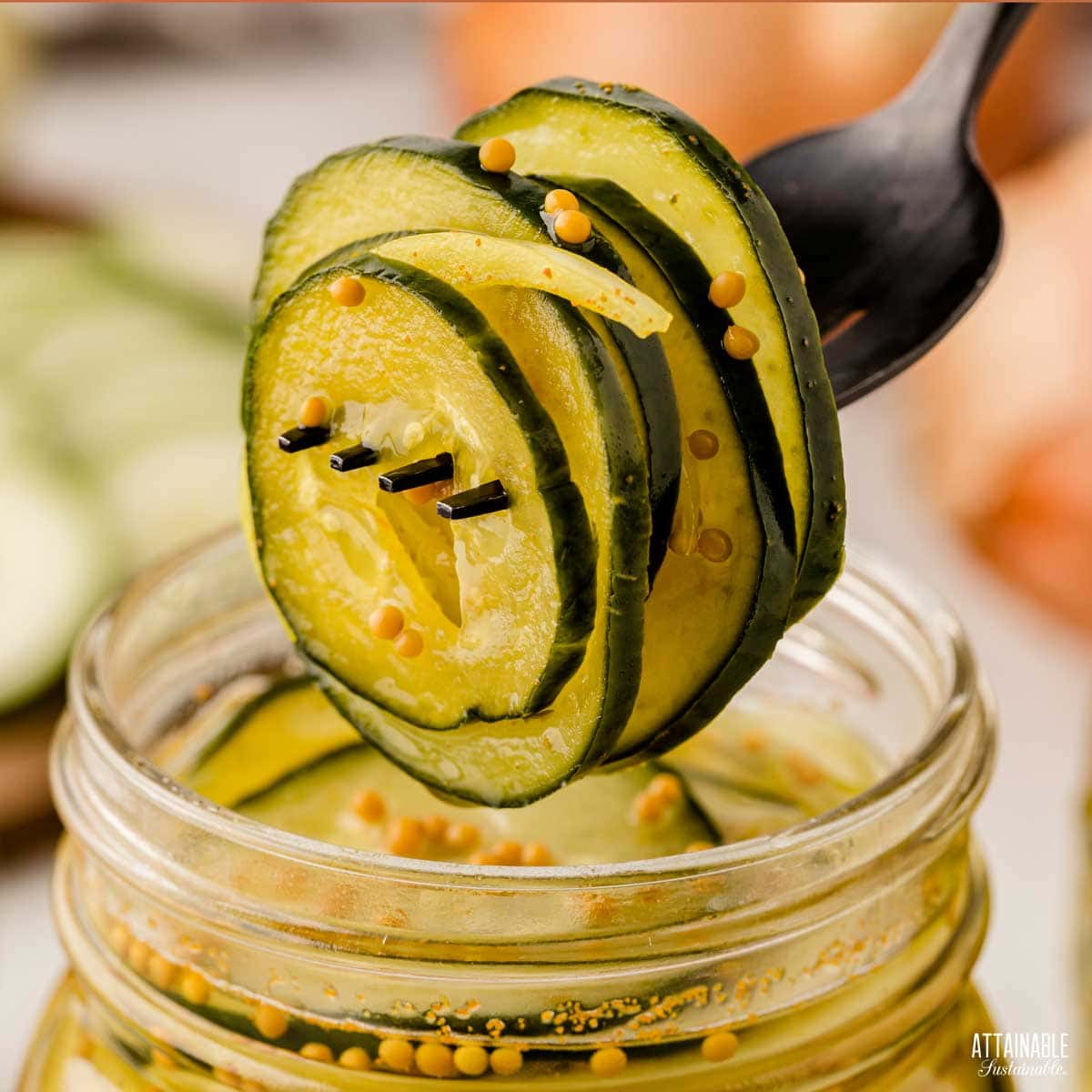
Pickles come in a variety of flavors, ingredients often varying depending on what’s in season. When cucumbers are abundant in the garden or at the farmers market, this recipe is a perfect way to use some.
Refrigerator Bread and Butter Pickles
It’s a funny name for a pickle, isn’t it? As the story goes, Omar and Cora Fanning farmed cucumbers and used them to make a family favorite pickle recipe. One hard season, Mrs. Fanning utilized the “cull” cukes to make jars of pickles to barter with.
They bartered for basics like (wait for it) bread and butter. The name stuck.
5 Easy Steps to Transform Your Pantry!
Ready to switch from store bought to homemade? Let me help you make some changes! Grab my FREE five-part guide to getting started.
The Handcrafted Pantry

Ready to DIY your pantry with more wholesome ingredients? Check out my ebook, The Handcrafted Pantry! Filled with delicious recipes for some of your favorite condiments, snacks, and toppings, it’s the guide you need to start skipping packaged products and embrace homemade.
Ingredients
Cucumbers — I like to use small pickling cucumbers as they will easily fit in the jars, and are the perfect size to use on sandwiches.
Onions — Onions pair so nicely with the cucumber and add a lot of flavor to the brine. You can use any type of bulb onion.
Sugar — Sugar is necessary for creating the pickling liquid so don’t be alarmed at the amount used. It’s what gives these refrigerator pickles their characteristic sweetness.
Apple Cider Vinegar — Be mindful of this little tidbit when buying apple cider vinegar.
Making Pickles
This bread and butter pickle recipe begins with sliced cucumbers and onions. You’ll soak them in salt water for 1-3 hours in the fridge. This pulls some of the moisture out of the cukes, allowing them to more readily absorb the flavors of the pickle brine.
Drain, rinse, and then pack the cucumbers into clean jars. You can use quart size jars or pint size jars for this recipe, whichever is most convenient for you.
Heat the vinegar mixture over medium heat until sugar is dissolved. Then pour the brine over the veggies in the jars while still warm.
Once jars are filled and the vegetables are covered with brine, secure a lid in place and refrigerate for a week or so before sampling.
More Refrigerator Pickles to Try
FAQs
What type of jars should I use?
Good news – you don’t need to use canning jars here, since this easy recipe isn’t canned.. These aren’t processed in a water bath or under pressure to make a shelf-stable pickle, so you can absolutely re-use jars and lids. Even jars from store-bought items like pasta sauce are fair game.
What type of cucumbers should I use?
Pickling cucumbers are small and tender. You can also look for English or hothouse cucumbers in the store which generally have a thinner skin and fewer seeds. And of course, regular cucumbers will work just fine!
Why do I soak the cucumbers first?
It’s a good idea to soak your cucumbers in salted water first. It might seem counterintuitive, but there’s a great reason. The salt helps to pull excess moisture from the produce – yes, even while it is sitting IN water. This will allow it to then soak up all the tasty brine to turn the cucumbers into pickles.
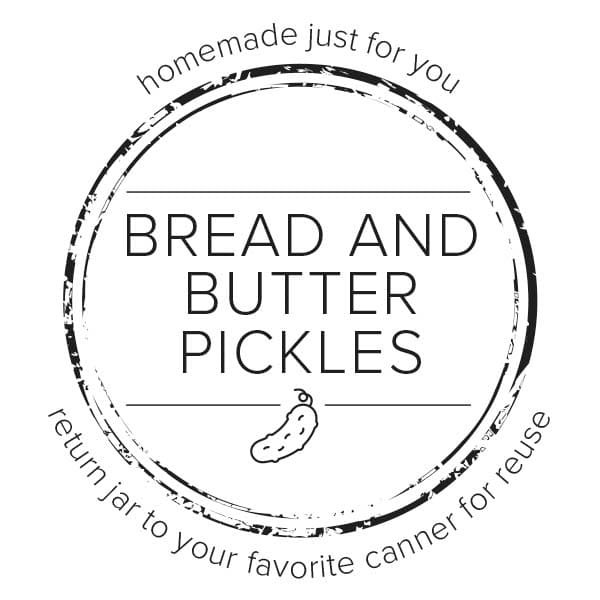
★ Did you love this recipe? Be sure to give it a star rating below! ★

Easy Refrigerator Bread and Butter Pickles
Ingredients
- 1 pound cucumbers sliced 1/8-1/4" thick
- 2 small onions thinly sliced
- 3 tablespoons sea salt or kosher salt
- 2 cups sugar
- 2 cups apple cider vinegar
- ¼ cup water
- 1 tablespoon mustard seeds
- 1 tablespoon turmeric powder
Instructions
- Combine cucumber slices, onions, and salt in a mixing bowl. Add water to cover and mix to combine. Refrigerate for 1-3 hours.1 pound cucumbers, 2 small onions, 3 tablespoons sea salt
- Combine remaining ingredients in a saucepan and heat over medium-high heat until sugar is dissolved and mixture is just simmering.2 cups sugar, 2 cups apple cider vinegar, 1/4 cup water, 1 tablespoon mustard seeds, 1 tablespoon turmeric powder
- While brine is heating, drain cucumber mixture and rinse well.
- Transfer cucumbers and onions to jars. This recipe will fill 2 quart sized jars or 4 pint sized jars.
- Pour hot brine over cucumbers to within one-half inch of rim. Seal jars with a lid and refrigerate for at least a week before sampling.
Notes
- Since you won't be processing these jars of pickles to make them shelf stable, it's a perfect opportunity to re-use glass jars from the store. You can also reuse canning jar lids (which is not safe for canned items).
Nutrition
History source: https://www.etsu.edu/cph/documents/bread_and_butter_pickles.pdf
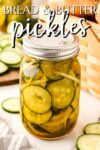
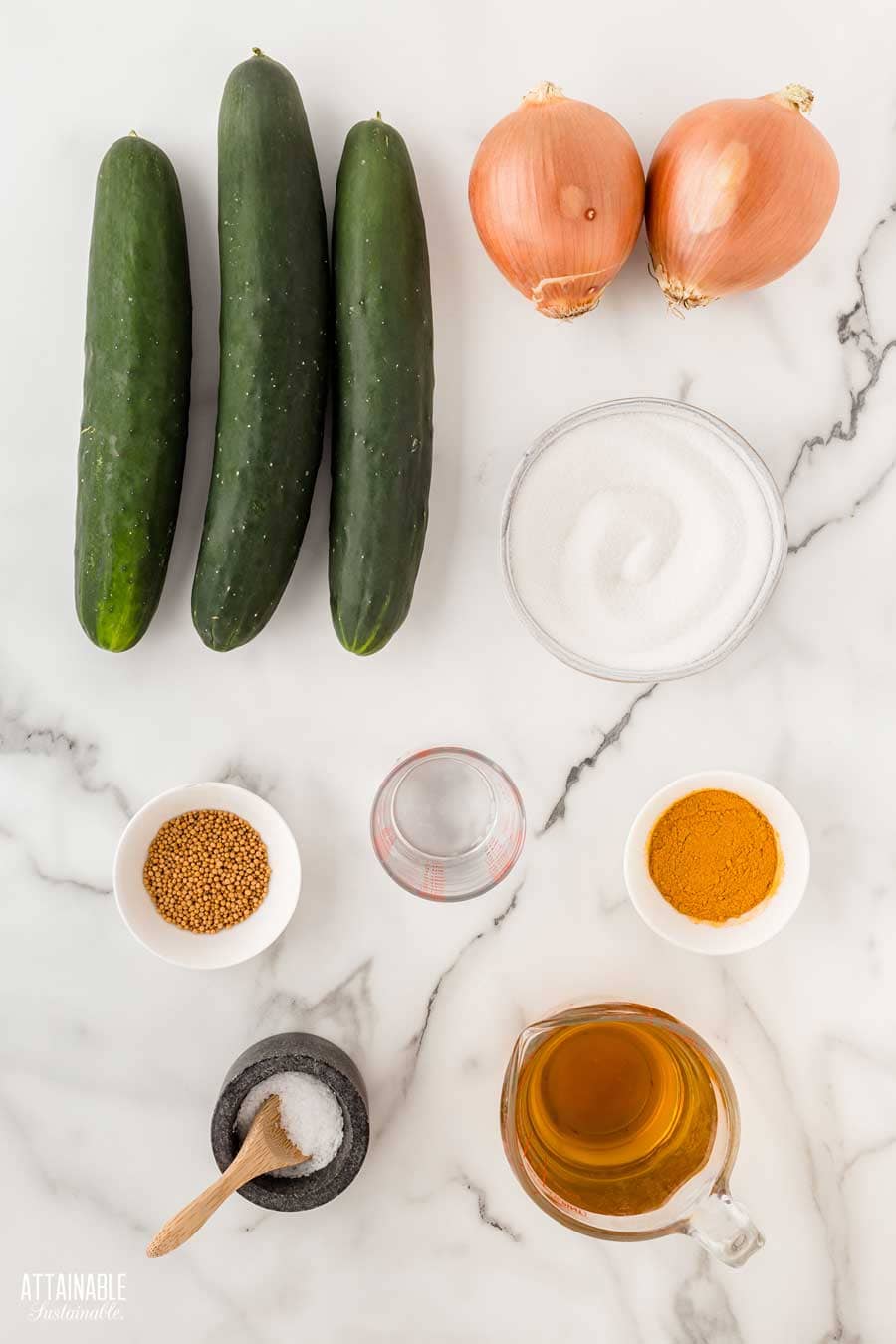
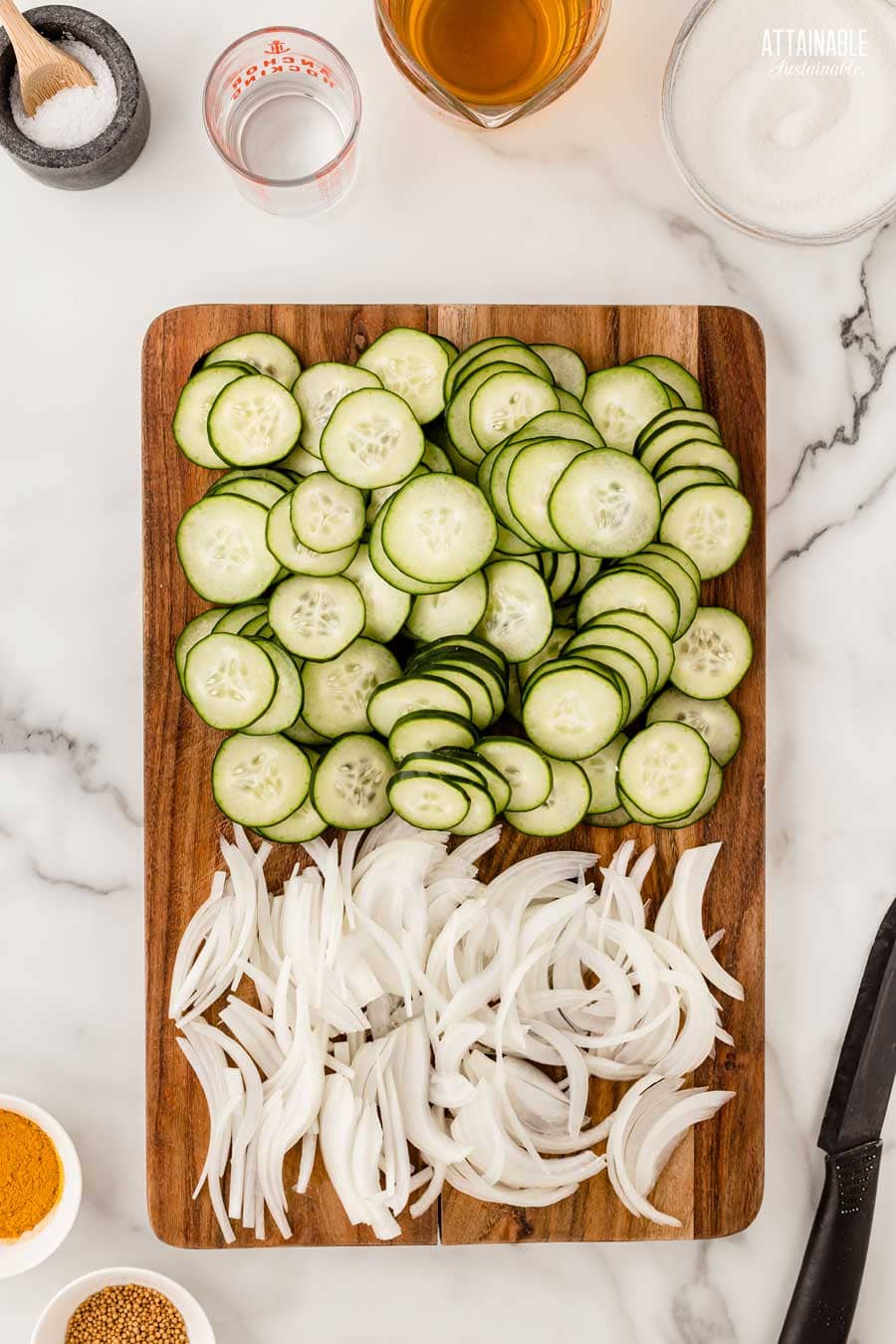
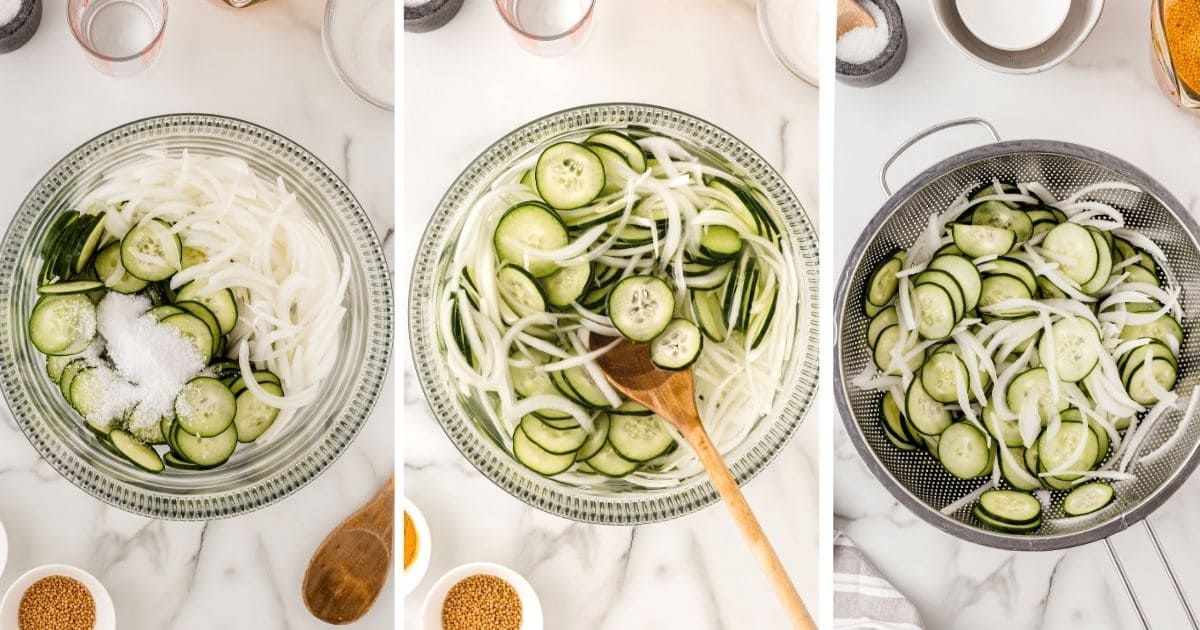
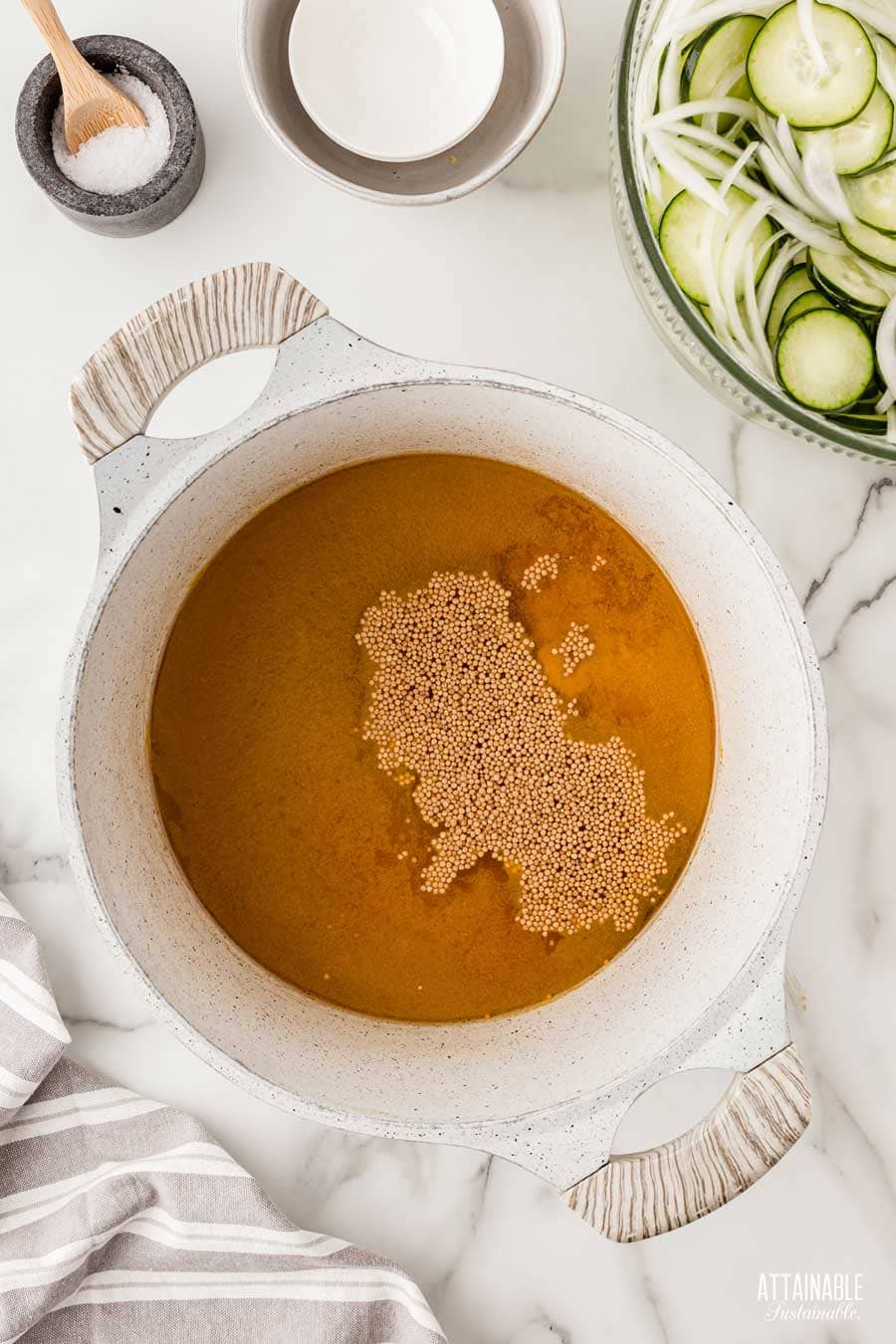
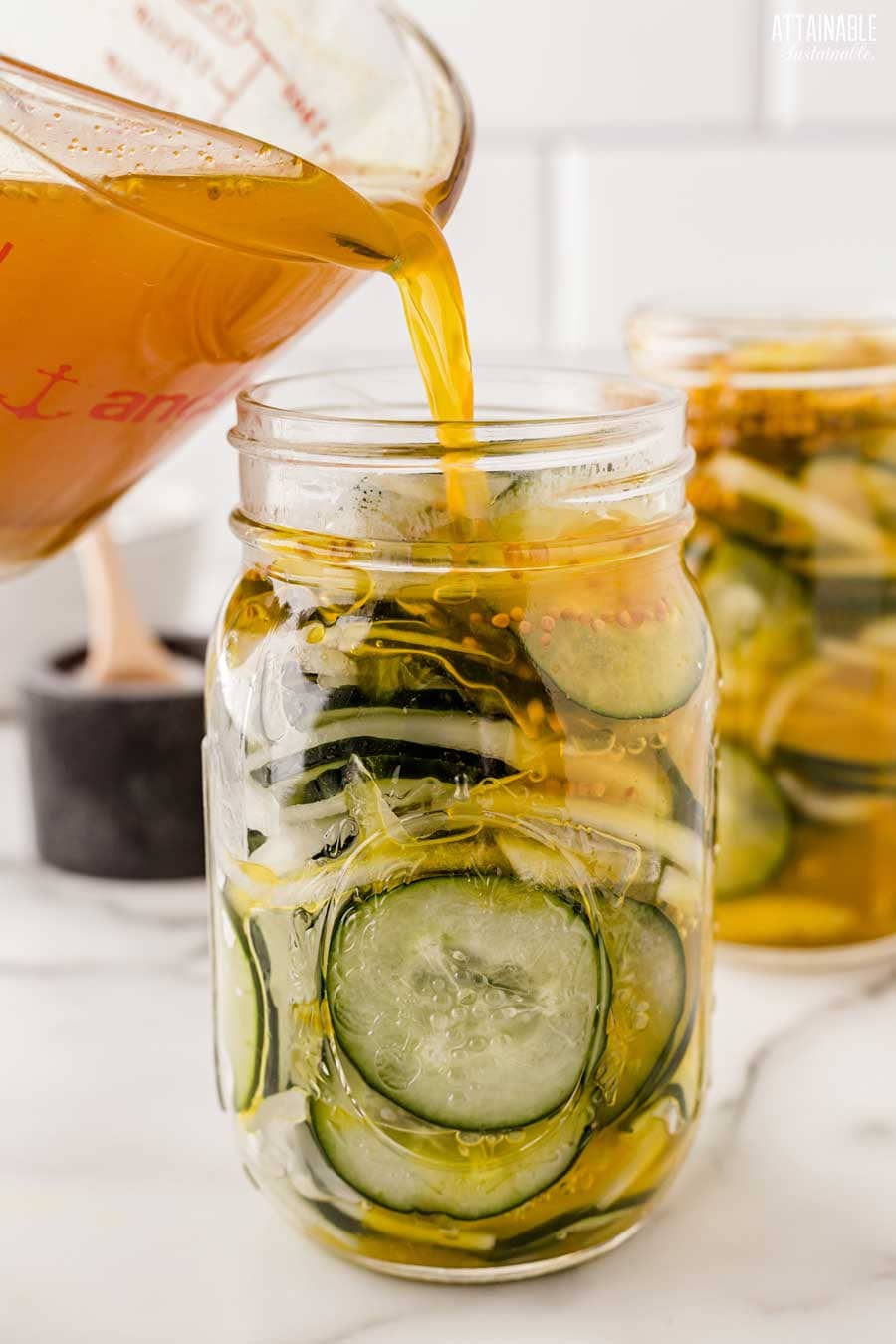
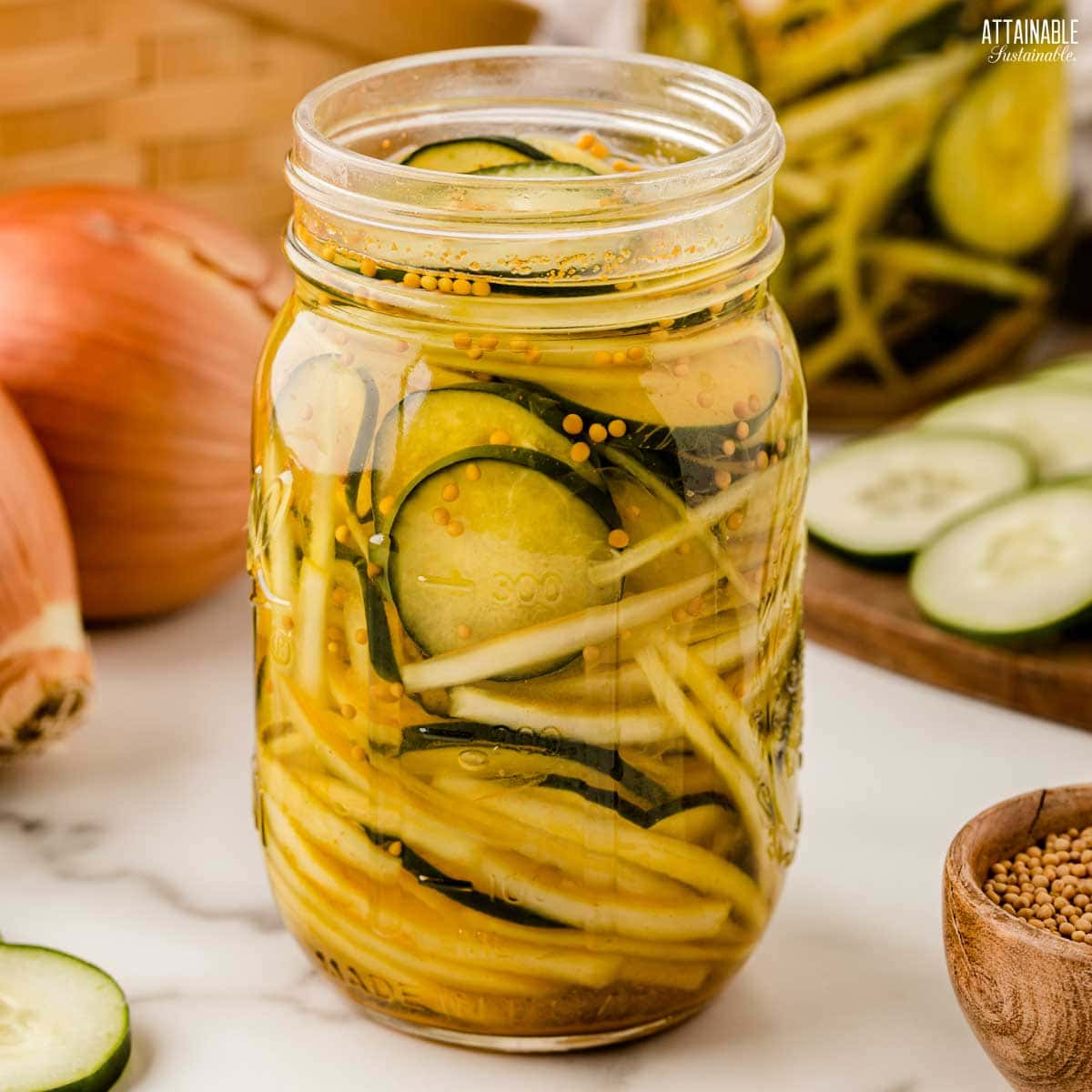






Could these be processed on a boiling water bath?
Refrigerator pickles don’t require any sort of processing since they’re not shelf stable. For canning pickles, I’d use a different recipe!
How long will they stay good in the frig
They should last up to a couple of months in the refrigerator, but I’m sure you’ll eat them up before then!
I have just competed these pickles and they really look good. I only got 2 and 1/2 pints out of this recipe and “yes” I did use 1 pound of cucumbers and the other ingredients in the recipe. The taste of the apple cider vinegar, sugar, mustard seed and turmeric mixture is very good. I hope I’ll be able to wait until next Wednesday for the taste testing.
That’s great! I’m sure they’ll be delicious 🙂
We use Jerusalem Artichokes, AKA Sunchokes, Kaishúcpenauk by the Algonquins, by the Mohawk, Ohnennata’ó:we and by the Manglish, Fartichokes. They make the best pickles! I like them better than cukes! They don’t require pickle crisp either.
There are four ways to neutralize the gas caused by the Inulin fiber in them and to avoid calling them Fartichokes:
1. Fermenting exactly like sauerkraut or in a Kimchi. Refrigerator pickles take a bit longer to ‘age’ unless they’re sliced thin or in a vinegar bath (see below).
2. Cooking or soaking with an acidic ingredient like vinegar or citric acid or the like.
3. Hours long cooking as in a slow-cooker stew or soup.
4. Freezing. We can most of our fall harvest as pickles and relishes since the vinegar works the Inulin and we use our spring harvest for eating them raw, roasted, boiled, fried, stir fried, etc. In zone 5 our winters are for sure cold enough!
Please note that products like Bean-o are enzymes that work on proteins, they won’t work the same way on the Inulin fiber!!
The Inulin is converted into Fructose making them sweeter, just like turnips after a good winter freeze.
I’ve made wine out of the flowers, it’s not a fruity wine of course. My wife doesn’t like it but I do (More for me!). It’s an earthy wine and a good cooking wine and it blends well with fruity wines as it adds those nice earthy tones. I’ve dried raw chips and made flour in a food processor. It’s like Buckwheat flour, heavy, and does best mixed with other flours.